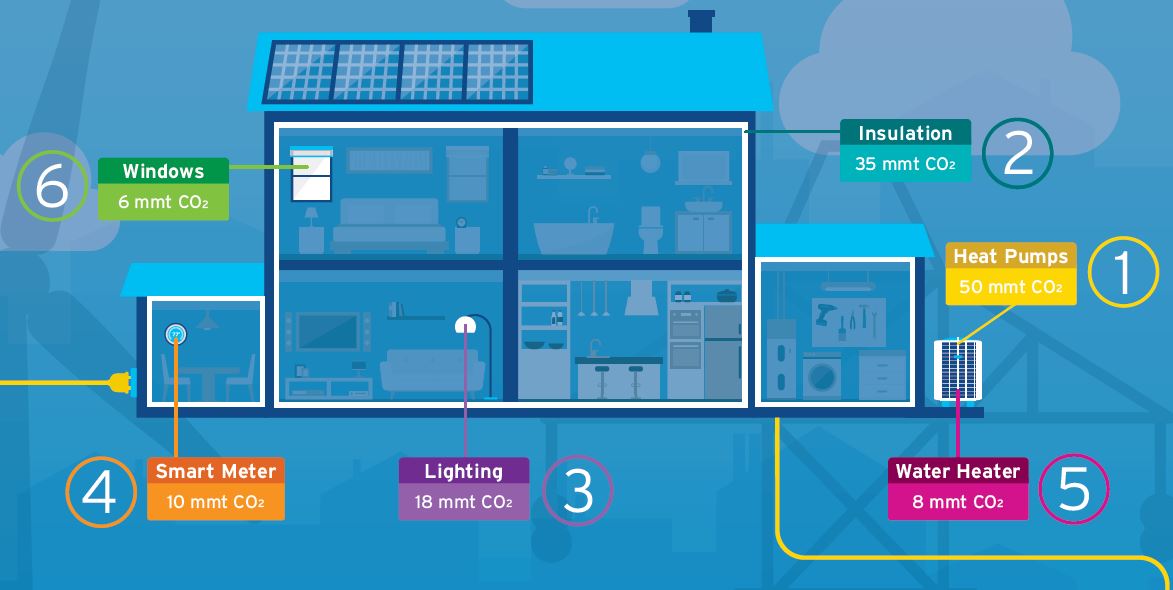Home of the Future

In the lead up to the 2021 UN Climate Change Conference (COP26), media channels are full of content highlighting both the issues and the challenges surrounding climate change. Agencies such as the Intergovernmental Panel on Climate Change (IPCC) warn that global warming will exceed 2°C during the 21st century. They believe achieving the goals of the 2015 Paris Agreement will soon be “beyond reach” unless rapid and deep emissions reductions in CO2 and other greenhouse gases (GHGs) occur in the next decade.
Others argue over who is ultimately responsible for reducing GHG emissions — countries who are currently the biggest emitters or countries who have emitted the most emissions cumulatively? In the Citi GPS report Global Carbon Markets, we argue climate change is a global problem that requires a global solution and international cooperation. In a variety of Citi GPS reports we have also discussed direct ways to decarbonize the planet — switching to electric vehicles; removing carbon dioxide from the air via carbon, capture, and storage (CCS) or direct air capture (DAC); changing the fuels we use for transportation; and using green inputs when we manufacture goods.
One of the largest carbon-emitting industries is the building sector. Building construction and operations accounted for 39% of global CO2 emissions in 2017, with operational carbon (i.e., the amount of carbon emitted during the daily use and maintenance of a home) accounting for 28% of total CO2 emissions. As we look for ways to decarbonize the planet, what if we could build a net zero emissions home?
The aim of our new Home of the Future series is to examine how the housing market can harness technological and financial innovations to make homes greener, smarter, more affordable, and more accessible to home buyers. This first report looks specifically at what is needed to build, operate, and maintain a home with net zero emissions.
Cutting back on electricity use is the biggest way to move the needle on reducing a home’s emissions. Opportunities to do so include replacing electric heating systems and water heaters with air source heat pumps and heat pump water heaters, respectively; installing insulation; upgrading to energy efficient lighting; installing smart thermostats; and replacing inefficient windows.
We provide case studies around these opportunities that look at the cost to a homeowner of installation, the potential payback period, and the expected emissions savings that would result from the upgrades. In aggregate, our case studies present an upfront cost of around $66,000 to the homeowner could effectively bring an average U.S. home to net zero emissions.
Looking “outside the four walls,” as power generation transitions away from the use of fossil fuels as energy sources, indirect carbon emissions from electricity usage by the residential sector should decline. In addition, household size (i.e., the number of inhabitants in a house) is a large determinant of residential emissions and global population shifts toward more densely populated areas and multifamily communities will also help decrease emissions.Authors: Anthony Pettinari,Roger Ashworth,Thais Alonso,Michael Bilerman,Bryan Burgmeier,Renata Cabral,Yijing (Alice) Cai,Ami Galla,Nicholas Joseph,Andrew Mazini, CFA,Adam Phillips,Ravi Shankar,Asher Sohnen,Eric Lau,
Framing the Carbon Issue in Housing

Capital Markets Are Starting to Address Financing Needs for Net Zero Homes

Mapping the Key Opportunities Inside the Four Walls

Turning Old Homes into Net Zero Homes



